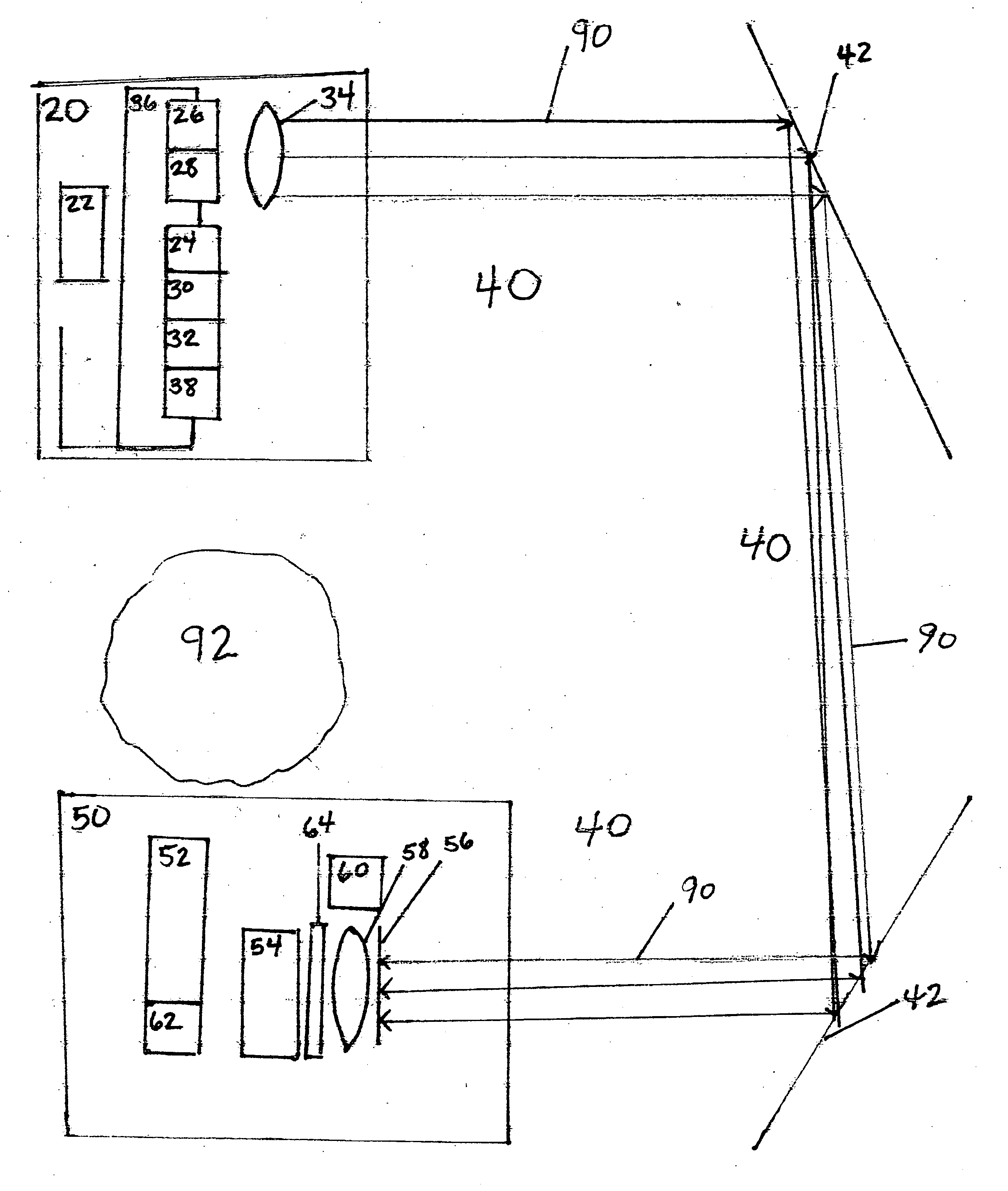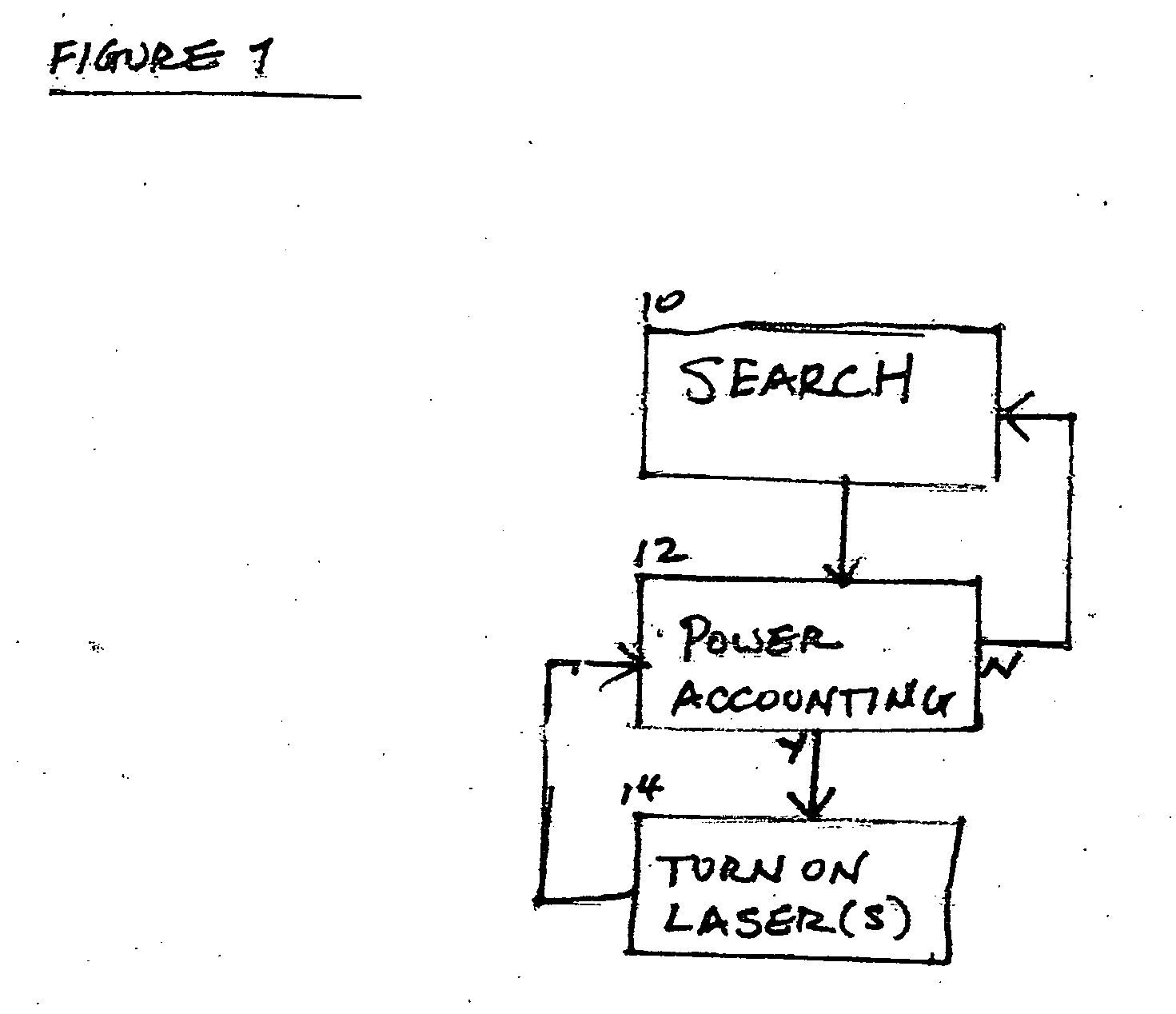Wireless power beaming to common electronic devices
a technology of electrical power beaming and electronic devices, applied in wave amplification devices, electrical equipment, laser details, etc., can solve the problems of insufficient outlets for all devices requiring power, affecting the service life of the device,
- Summary
- Abstract
- Description
- Claims
- Application Information
AI Technical Summary
Problems solved by technology
Method used
Image
Examples
embodiment 1a
[0073]FIG. 2 Embodiment 1A
[0074] A preferred embodiment of the present invention is illustrated in FIG. 1A. This is for a system that might be used in a person's living room to illuminate a light attached to the ceiling. The load is assumed to require 20 Watts.
[0075] The preferred embodiment consists generally of transmitter assembly 20, free space 40, and optical to electrical converter 50.
[0076] Transmitter assembly 20 converts electricity to light. In the preferred embodiments, it uses an eye-safe diode laser(s) 26. These operate at >1500 nm wavelength. Such lasers are made by nLight Photonics, Inc, Princeton Lightwave, Covega, and other sources. Light 90 from the laser(s) 26 goes immediately into lens(es) 34 for focusing and pointing the lasers. In the preferred embodiment, the outgoing light 90 is nearly collimated, and the beam intensity is 1 mW / sq. mm-10 mW / sq.mm. The beam profile is substantially uniform.
[0077] The Transmitter assembly 20 must aim the light. To aim the li...
embodiment 1b
[0084]FIG. 3 Embodiment 1B
[0085] A preferred embodiment of the present invention is illustrated in FIG. 1B. This is for a system that might be used in a café or office to charge cell phones, laptops, etc. The load of a cell phone is 3-5 W and of a laptop 30-50 W. The elements are the same.
[0086] The elements of Embodiment 1B are the same as those for Embodiment 1A except as described here.
[0087] Transmit assembly 20 is assumed to be on the ceiling pointing downward for this embodiment. Obstruction 92 does not exist, so mirror 42 is not used. In embodiment 1B, the loads, the cell phones, place different requirements on the system.
[0088] Cell phones move, and may be anywhere. Pointing mechanism 36 is powered and controlled from the CPU 22. It may be a powered pan-and tilt system, as is commonly seen on security cameras. In an alternate embodiment, pointing mechanism 36 may be fixed, and an actuated mirror may be used to alter the beampath and allow the camera to scan.
[0089] Becaus...
PUM
 Login to View More
Login to View More Abstract
Description
Claims
Application Information
 Login to View More
Login to View More - R&D
- Intellectual Property
- Life Sciences
- Materials
- Tech Scout
- Unparalleled Data Quality
- Higher Quality Content
- 60% Fewer Hallucinations
Browse by: Latest US Patents, China's latest patents, Technical Efficacy Thesaurus, Application Domain, Technology Topic, Popular Technical Reports.
© 2025 PatSnap. All rights reserved.Legal|Privacy policy|Modern Slavery Act Transparency Statement|Sitemap|About US| Contact US: help@patsnap.com



